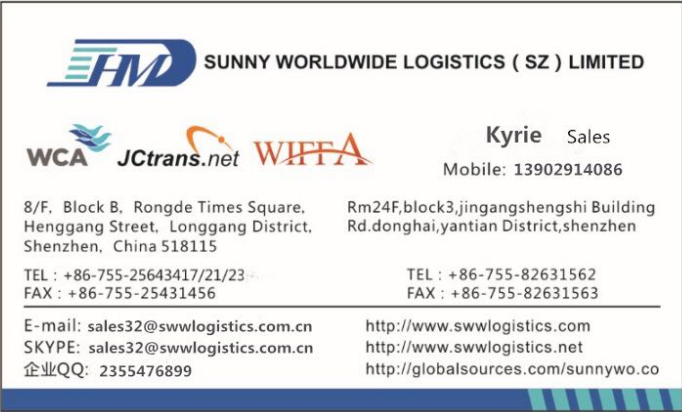CU Lines joins South Korea-Vietnam route
- Author:Kyrie
- Source:Sunny
- Release Date:2020-08-15
After purchasing flights on the Hai Phong Express (HPX) service operated by South Korean operators HMM and CK Line, CU Lines launched the service for the first time between South Korea and Southeast Asia.
CU Line’s main shareholder is Unitrans, a Chinese government-controlled company, which holds 55% of the shares and mainly operates in China’s domestic waters and the Taiwan Strait.
This new service will start on August 16. HPX service calls Incheon, Busan, Hong Kong and Haiphong, Vietnam.
HMM and CK shipping companies will each deploy a 1200 teu container ship on the HPX service, while South Korean shipping agency Star Ocean Line will represent CU Shipping’s business in Korea.
Star Company President Eom Tae-Man stated that the company “is expanding its agency business to represent liner operators from different countries, such as China’s CU Lines, Singapore’s Feedertech and Perma Shipping Line.”
On August 12, 2020, Moon Seong-hyeok, Minister of Oceans and Fisheries of South Korea, launched an enhanced five-year plan to revitalize the shipping industry. He pointed out that the fierce competition in East Asia-Southeast Asia trade is intensifying.
When the HPX service was launched, another Korean feeder operator, Pan Continental Shipping (PanCon Line), announced that it would deploy an owned vessel to increase the capacity of the Busan-Incheon-Haiphong (BIH) service.
Since the BIH service was started in the second half of 2015, PanCon Line has purchased slots from Namsung Shipping, a fellow connection operator. From August 25, PanCon Line will deploy 1000TEU PanCon Victory to supplement Namsung's tonnage.
On August 18th, the Thai Feeder Container Line and Hong Kong’s Venus Shipping Company will launch a 900TEU ship service to connect Ho Chi Minh City with Singapore and Malaysia’s Port Klang.
Container shipments between East Asia and Southeast Asia (especially Vietnam) have been increasing because of trade tensions between the United States and China that have caused manufacturers to move part of their production from China to Vietnam.

CU Line’s main shareholder is Unitrans, a Chinese government-controlled company, which holds 55% of the shares and mainly operates in China’s domestic waters and the Taiwan Strait.
This new service will start on August 16. HPX service calls Incheon, Busan, Hong Kong and Haiphong, Vietnam.
HMM and CK shipping companies will each deploy a 1200 teu container ship on the HPX service, while South Korean shipping agency Star Ocean Line will represent CU Shipping’s business in Korea.
Star Company President Eom Tae-Man stated that the company “is expanding its agency business to represent liner operators from different countries, such as China’s CU Lines, Singapore’s Feedertech and Perma Shipping Line.”
On August 12, 2020, Moon Seong-hyeok, Minister of Oceans and Fisheries of South Korea, launched an enhanced five-year plan to revitalize the shipping industry. He pointed out that the fierce competition in East Asia-Southeast Asia trade is intensifying.
When the HPX service was launched, another Korean feeder operator, Pan Continental Shipping (PanCon Line), announced that it would deploy an owned vessel to increase the capacity of the Busan-Incheon-Haiphong (BIH) service.
Since the BIH service was started in the second half of 2015, PanCon Line has purchased slots from Namsung Shipping, a fellow connection operator. From August 25, PanCon Line will deploy 1000TEU PanCon Victory to supplement Namsung's tonnage.
On August 18th, the Thai Feeder Container Line and Hong Kong’s Venus Shipping Company will launch a 900TEU ship service to connect Ho Chi Minh City with Singapore and Malaysia’s Port Klang.
Container shipments between East Asia and Southeast Asia (especially Vietnam) have been increasing because of trade tensions between the United States and China that have caused manufacturers to move part of their production from China to Vietnam.

